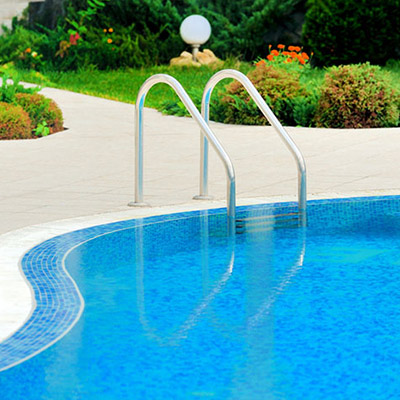How to Open a Pool
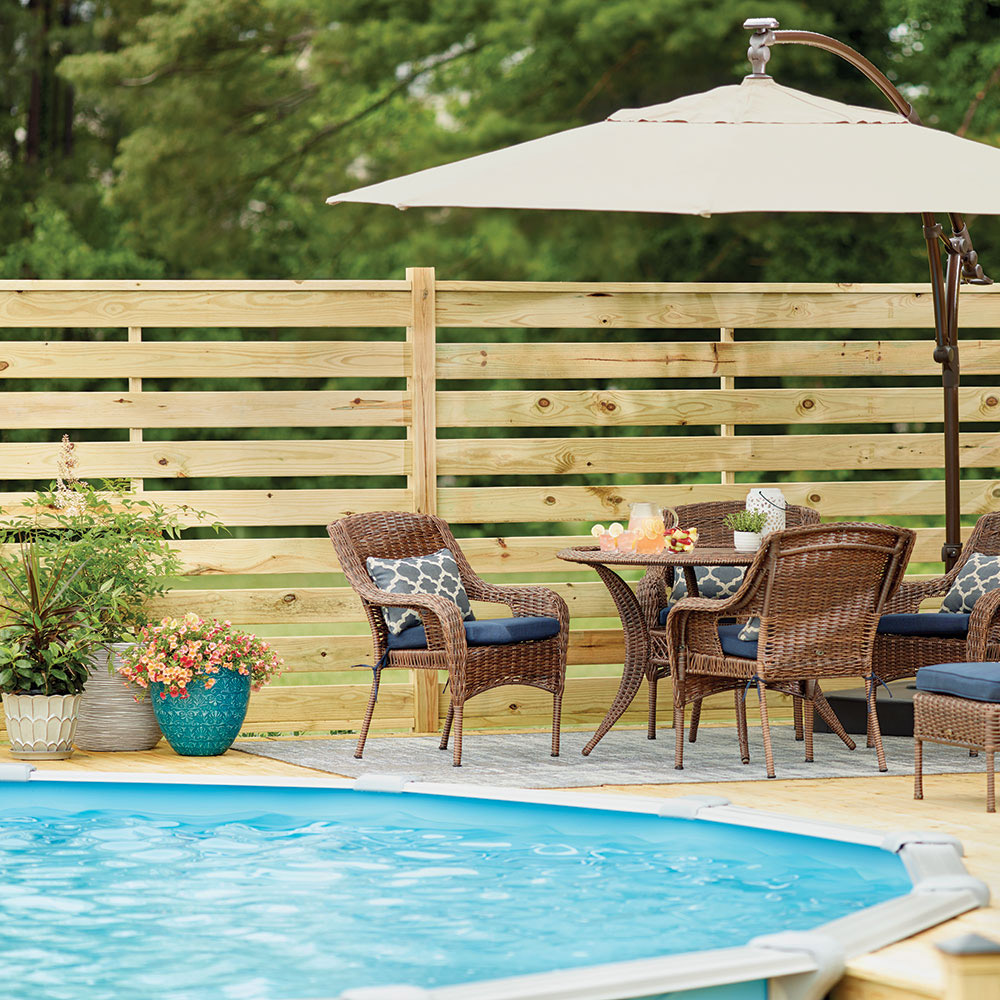
Last updated September 7, 2023
Pool openings mark the start of summer for many people. If the temperature outside is regularly 70 degrees Fahrenheit or higher, opening day has officially arrived. Keep reading below for instructions on how to open your pool and prepare the water for a season of clear and healthy swimming.
For tips on preserving your pool during the cooler months, read our guide onhow to winterize a pool.
Difficulty:
Intermediate
Duration:
2-4 hours
Table of Contents
Remove the Cover
Raise the Water Levels
Clean and Circulate the Water
Test and Balance the Water
Sanitize and Shock the Water
Prevent Algae
Remove the Cover
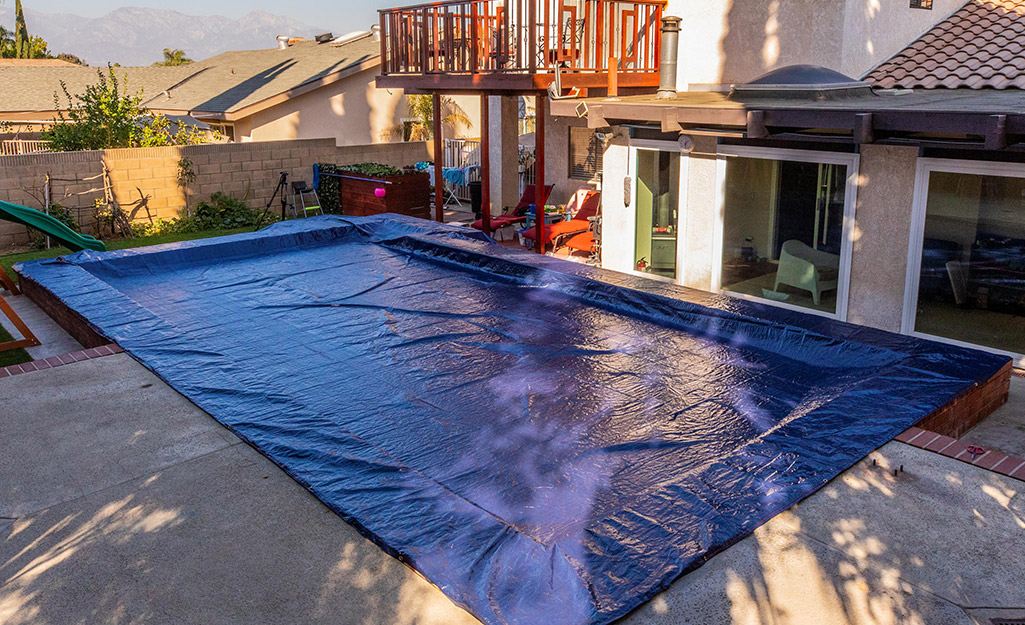
- If your pool was covered for the winter, drain the water from the cover and brush off any debris. You may need to use a leaf blower to remove heavier debris buildup.
- Carefully remove the cover from the pool, and clean your cover thoroughly.
- Allow the cover to dry completely before storing in a cool, dry place. This will help prevent mold and avoid damage.
Raise the Water Levels
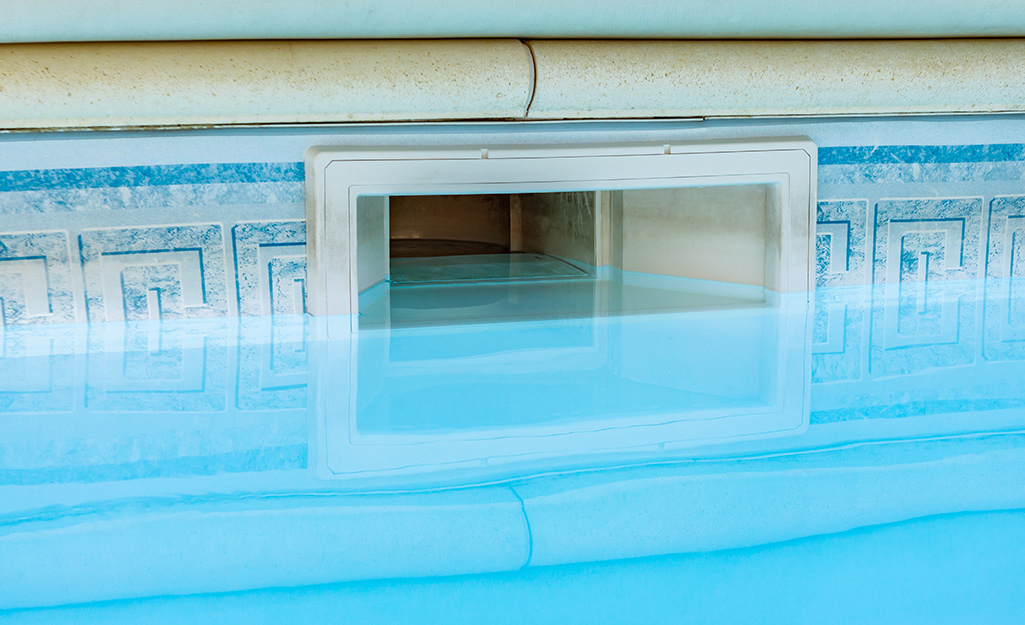
- Use a water hose to add water to your pool as needed.
- The water levels should reach the middle of your in-pool skimmer opening. The skimmer keeps your pool clean and free of leaves and debris.
Clean and Circulate the Water
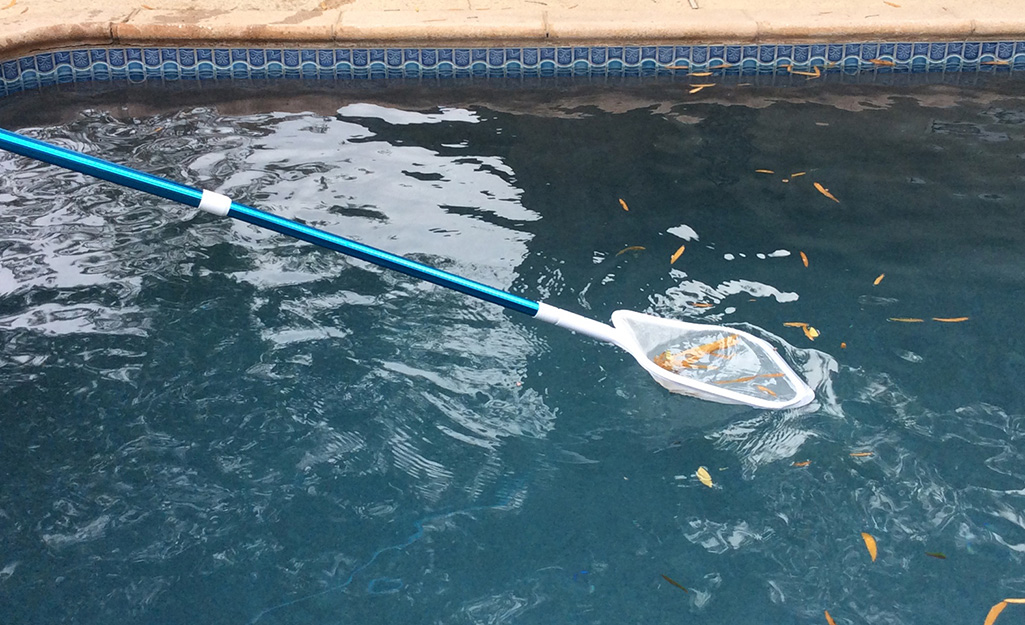
- Attach a pool pole to your leaf rake or pool skimmer, and remove as much debris as possible from the water’s surface.
- Brush the walls of your pool and vacuum the pool floor thoroughly to remove any remaining waste.
- Allow your pool water to circulate for at least 24 hours.
Test and Balance the Water
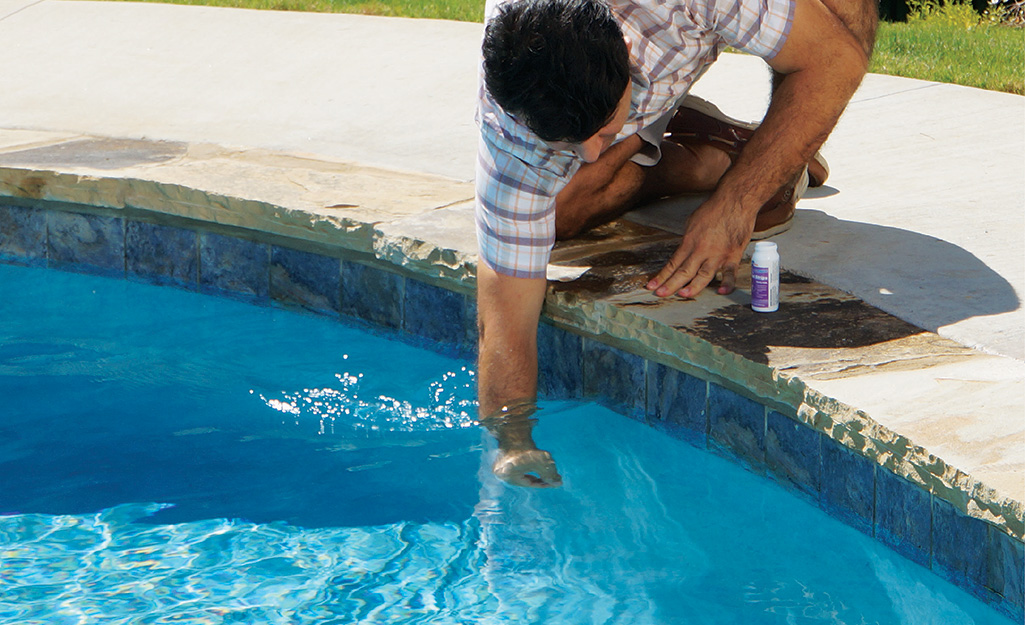
Test your water using an at-home pool test kit, and balance your pool according to the results.
- Start with balancing alkalinity, then pH, then total hardness.
Ideal levels for each are as follows:
Total Alkalinity: 80 to 150 ppm
- If total alkalinity is low, add an alkalinity increaser.
pH: 7.2 to 7.6
- If pH is low, add a pH increaser.
- If pH is high, add a pH reducer.
Total Hardness: 175-270 ppm
- If total hardness is low, add a hardness increaser.
Sanitize and Shock the Water
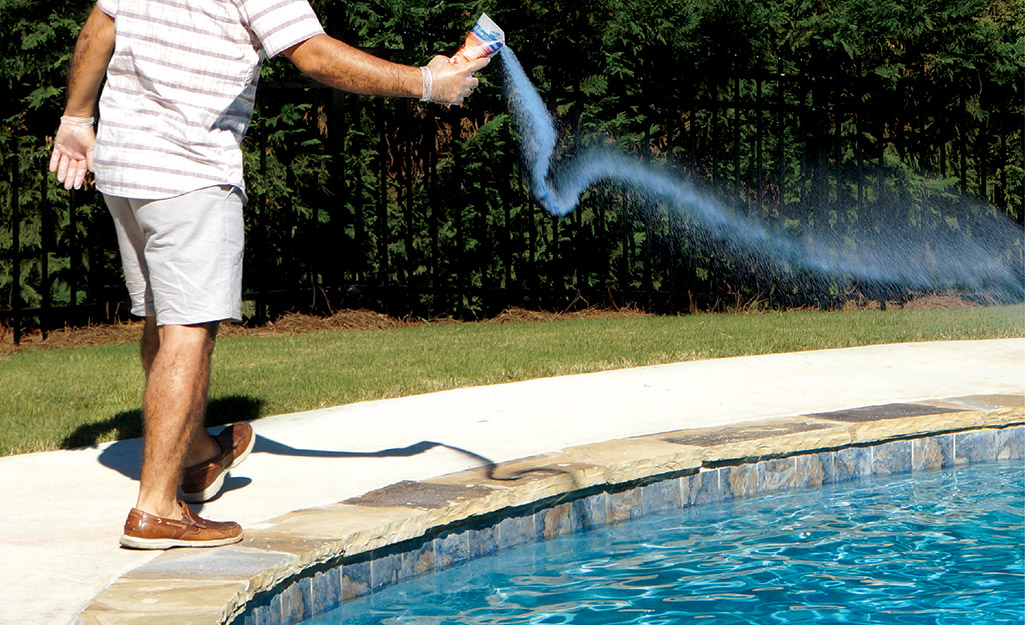
- Once alkalinity, pH and hardness are all within the proper range, balance chlorine levels by sanitizing the water with quality chlorine tablets or granules.
- Once the water is balanced, use a pool shock to remove lingering contaminants.
Prevent Algae
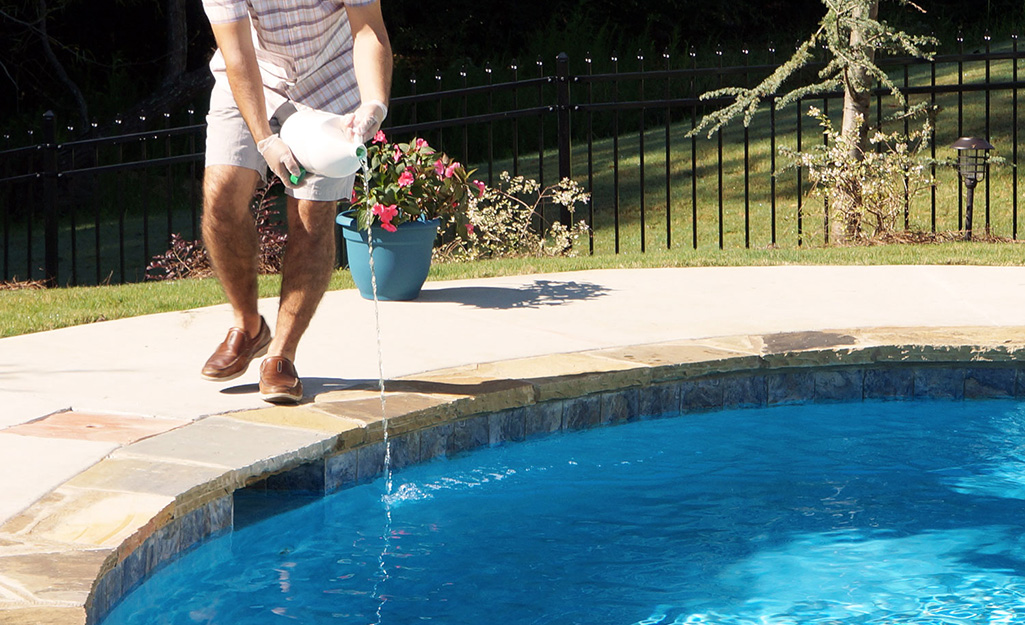
- Protect your pool from algae by applying a dose of preventative algaecide according to label directions for pool opening.
- Allow product to work overnight with the pump running.
Re-Test and Enjoy
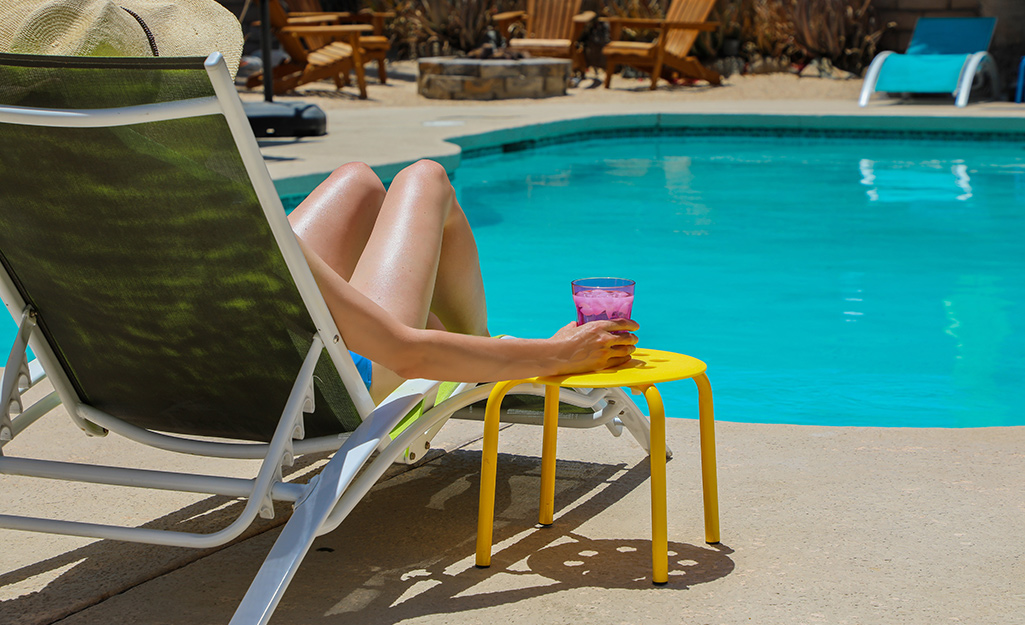
- Before entering your pool, re-test the chlorine levels to ensure it is in the safe range of 1 to 4ppm.
- If the levels are well-balanced, your pool is officially open and ready for swimming.
Make sure you have the right treatments for your pool when you need them. The Home Depot delivers online orders to your home.



